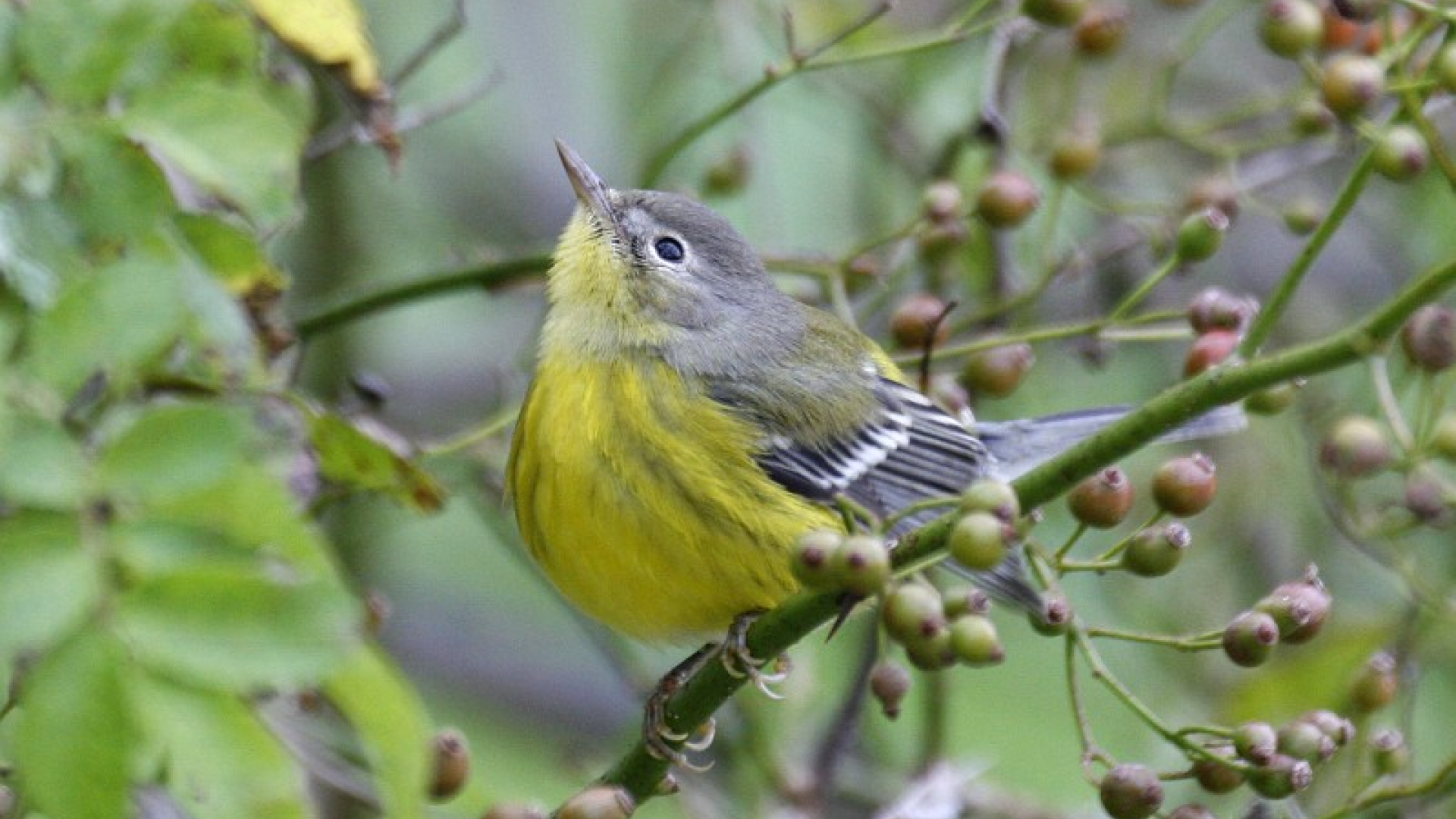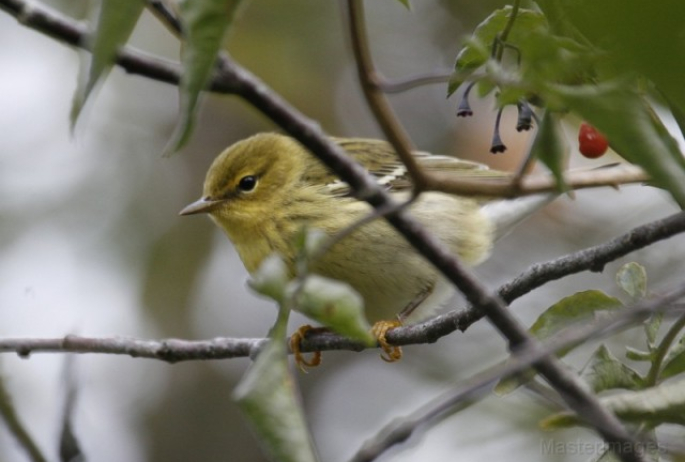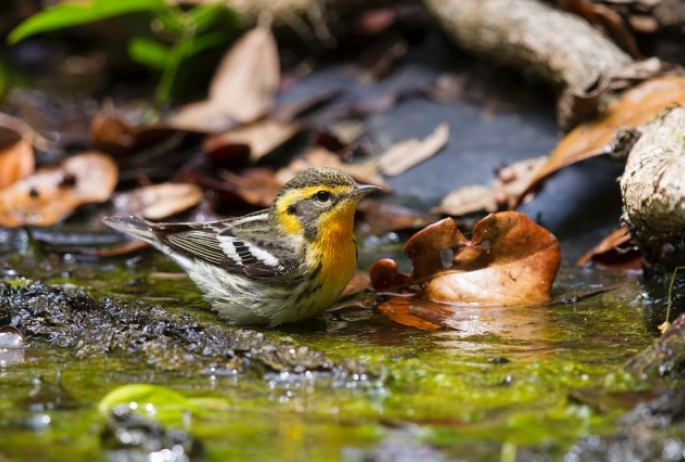Bring your binoculars and camera
During the late summer and early fall I make a point to be out with my binoculars everyday – in the morning if I can manage it. After all, it is during this time of year that migrant songbirds are flocking up and passing through our region. And so each day usually begins with me grabbing my binoculars and camera – not to mention Wren – and heading to a local trail to search for birds on the move.
Favorite trails in September
Two of my favorite trails this time of year for migrants are the railroad tracks which lead along the backside of Lake Colby in Saranac Lake, and the south entrance to the Bloomingdale Bog Trail. I have also walked the railroad tracks between Saranac Lake and Ray Brook where the scenic train runs (sometimes called Fowler’s Crossing). Just go early in the morning before the train. All of these trails work their way along water and are lined with brushy vegetation such as alders and choke cherry which draw in the birds both for their fruit and the insects they attract. And all three trails are easy for a quick pop-in to see if anything is moving – you don’t have to walk far to reach good habitat for migrants.
Finding birds
I have been rewarded for my diligence. The bog trail has yielded species like Bay-breasted Warbler, Canada Warbler, Blackburnian Warbler, and Black-throated Green Warbler. I have also found Solitary Sandpiper there in the muddy edges of the marsh as well as a calling Carolina Wren – a southern species which for some reason was visiting our area. Lake Colby has been just as good, if not better. Three days ago I found 7 species of warblers there on a short walk – including Common Yellowthroat, Northern Parula, Yellow-rumped, Nashville, Magnolia, 3 Tennessee Warblers, and my first Blackpoll Warbler of the fall. The following day I was back and found a similar mix of species, adding an Ovenbird to my tally. Less common species like Mourning Warblers have also been around, and I’ve seen them on the bog trail, along the scenic railroad tracks, and one even showed up in my yard. That’s nothing new though - my yard has been good all fall for warblers adding a male Wilson’s Warbler several days ago. In fact, in just over a week my short morning walks have totaled 23 species of warblers in the area!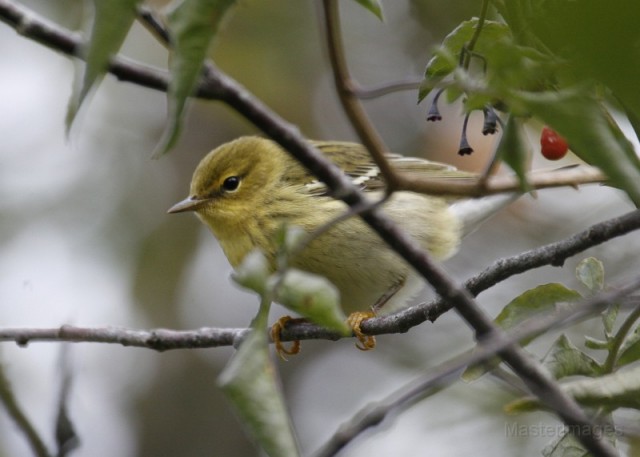
Even with my success, I decided to try a new location for fall birds earlier this week and took a walk with Wren along the powerline trail which runs out of Gabriels. A snowmobile trail in the winter, the powerlines have an easy walking path and they are once again lined with brushy vegetation like alders and willows.
The birds were so active that I could have remained in the first 100 meters the first day. I found 11 species of warblers including 2 Cape May Warblers, Tennessee, Yellow, and Black-throated Blue Warblers. Not only that, but several Rose-breasted Grosbeaks lurked in the thick vegetation giving their characteristic sharp iik call. I stood with my camera in a clumsy attempt to get photos as the birds bounced through the branches, and Wren looked at me quizzically waiting for me to move on. I finally did walk as far as the beaver pond where she took a dip on the rapidly warming day.
Today I was back on the powerline trail, and this time we walked farther, partly because it was quieter near the beginning. But I found a few Gray Jays chattering loudly in the spruces, and after we turned and walked back past the beaver pond, the Pik of a Black-backed Woodpecker caught my attention. A short way down the trail I caught sight of a female Black-backed working hard at the top of a dead spruce. Not caring about the woodpecker, Wren picked up a freshly gnawed stick from the beavers and carried it down the trail.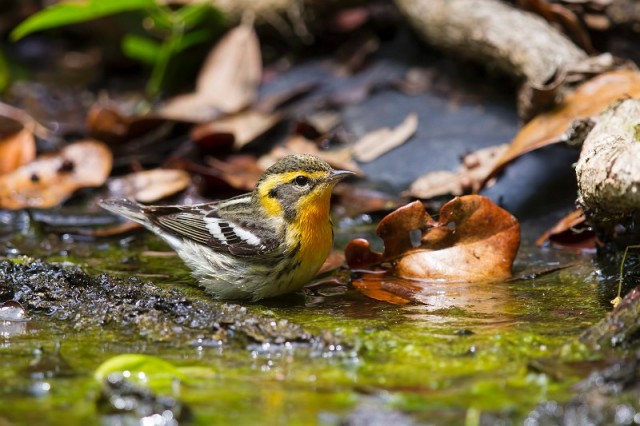
Once back near the trailhead I was once again surrounded by migrating songbirds, and the day’s list of warblers quickly included Cape May, Yellow-rumped, Nashville, and Magnolia, among others. A Philadelphia Vireo soon caught my attention as I sifted through the flock and I stood waiting to see if it would come to the near side of the willow in which it was feeding so I could get a photo. It never did. Wren dropped her long stick and waited, watching me as it started to rain. I spotted an Olive-sided Flycatcher which was using the increasing rainfall for a chance to take a shower as it fluffed its' feathers and bathed.
The rain continued to increase and with it came a driving wind and soon my binoculars were fogged with water and I couldn’t see anymore. We were getting pretty wet anyway. Wren grabbed her stick (which now lays in the front yard) and we headed to the dry security of the car. It had been another successful morning birding in the fleeting opportunity which is fall migration and we will be out again tomorrow.
